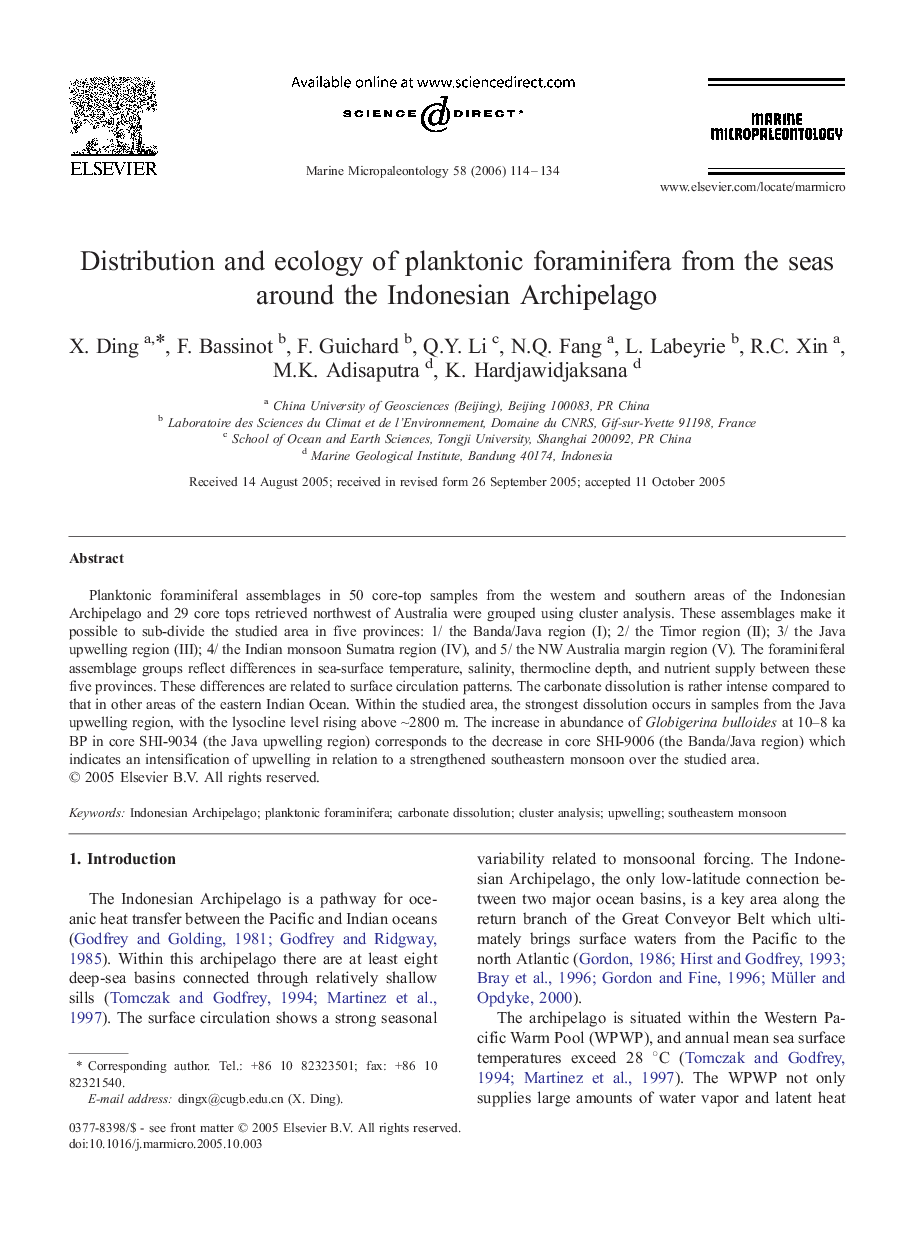| Article ID | Journal | Published Year | Pages | File Type |
|---|---|---|---|---|
| 4749586 | Marine Micropaleontology | 2006 | 21 Pages |
Planktonic foraminiferal assemblages in 50 core-top samples from the western and southern areas of the Indonesian Archipelago and 29 core tops retrieved northwest of Australia were grouped using cluster analysis. These assemblages make it possible to sub-divide the studied area in five provinces: 1/ the Banda/Java region (I); 2/ the Timor region (II); 3/ the Java upwelling region (III); 4/ the Indian monsoon Sumatra region (IV), and 5/ the NW Australia margin region (V). The foraminiferal assemblage groups reflect differences in sea-surface temperature, salinity, thermocline depth, and nutrient supply between these five provinces. These differences are related to surface circulation patterns. The carbonate dissolution is rather intense compared to that in other areas of the eastern Indian Ocean. Within the studied area, the strongest dissolution occurs in samples from the Java upwelling region, with the lysocline level rising above ∼2800 m. The increase in abundance of Globigerina bulloides at 10–8 ka BP in core SHI-9034 (the Java upwelling region) corresponds to the decrease in core SHI-9006 (the Banda/Java region) which indicates an intensification of upwelling in relation to a strengthened southeastern monsoon over the studied area.
